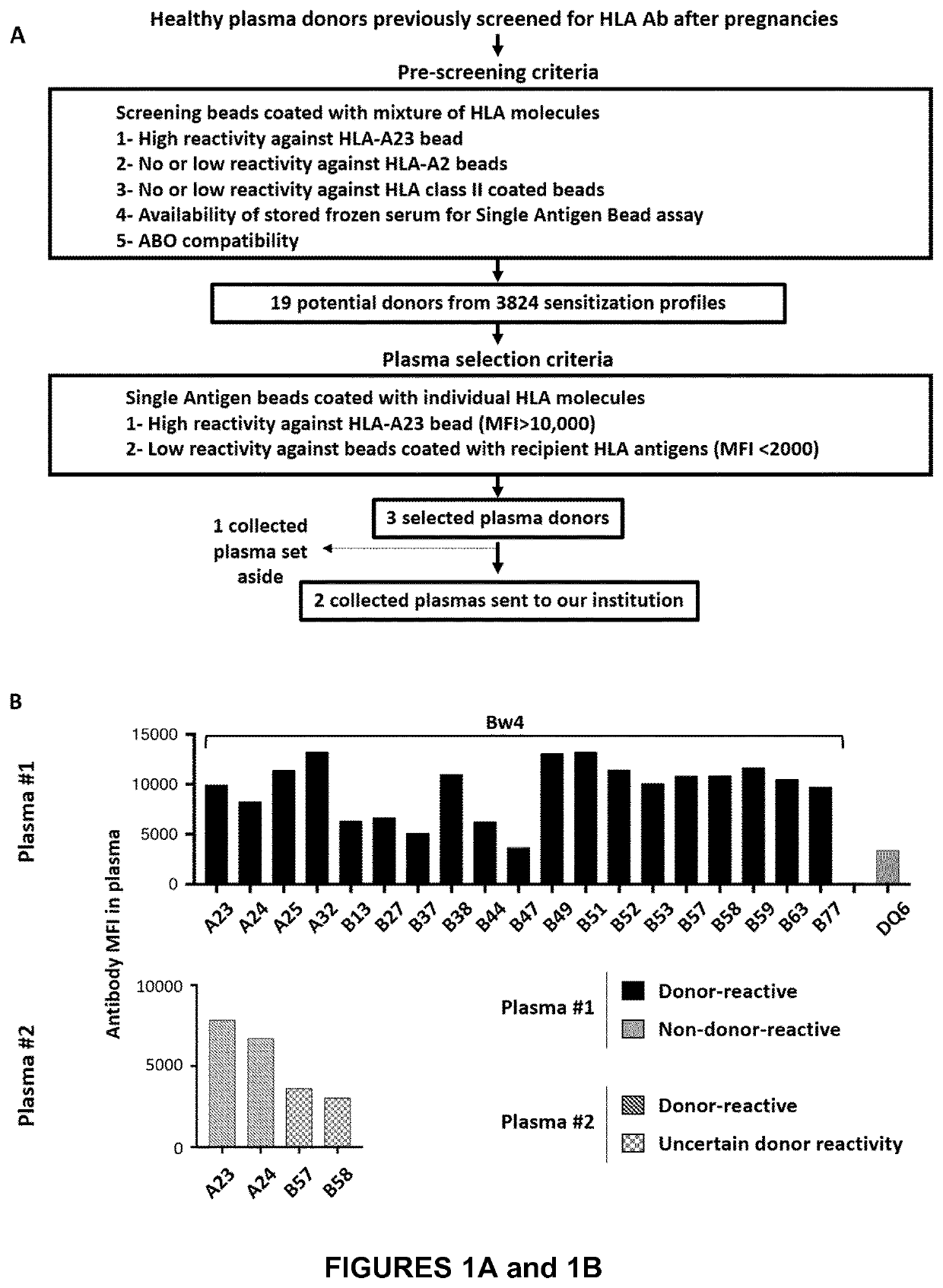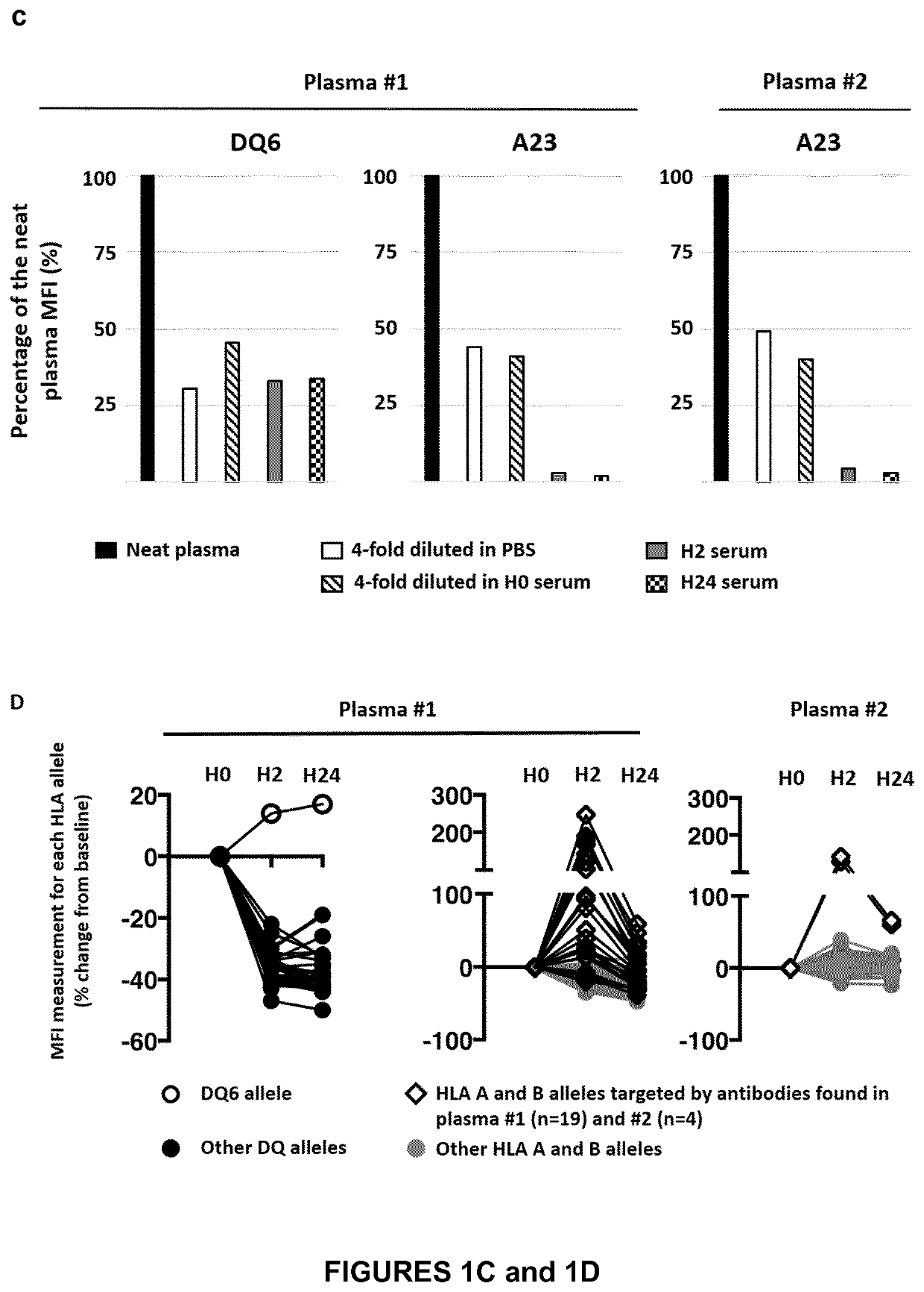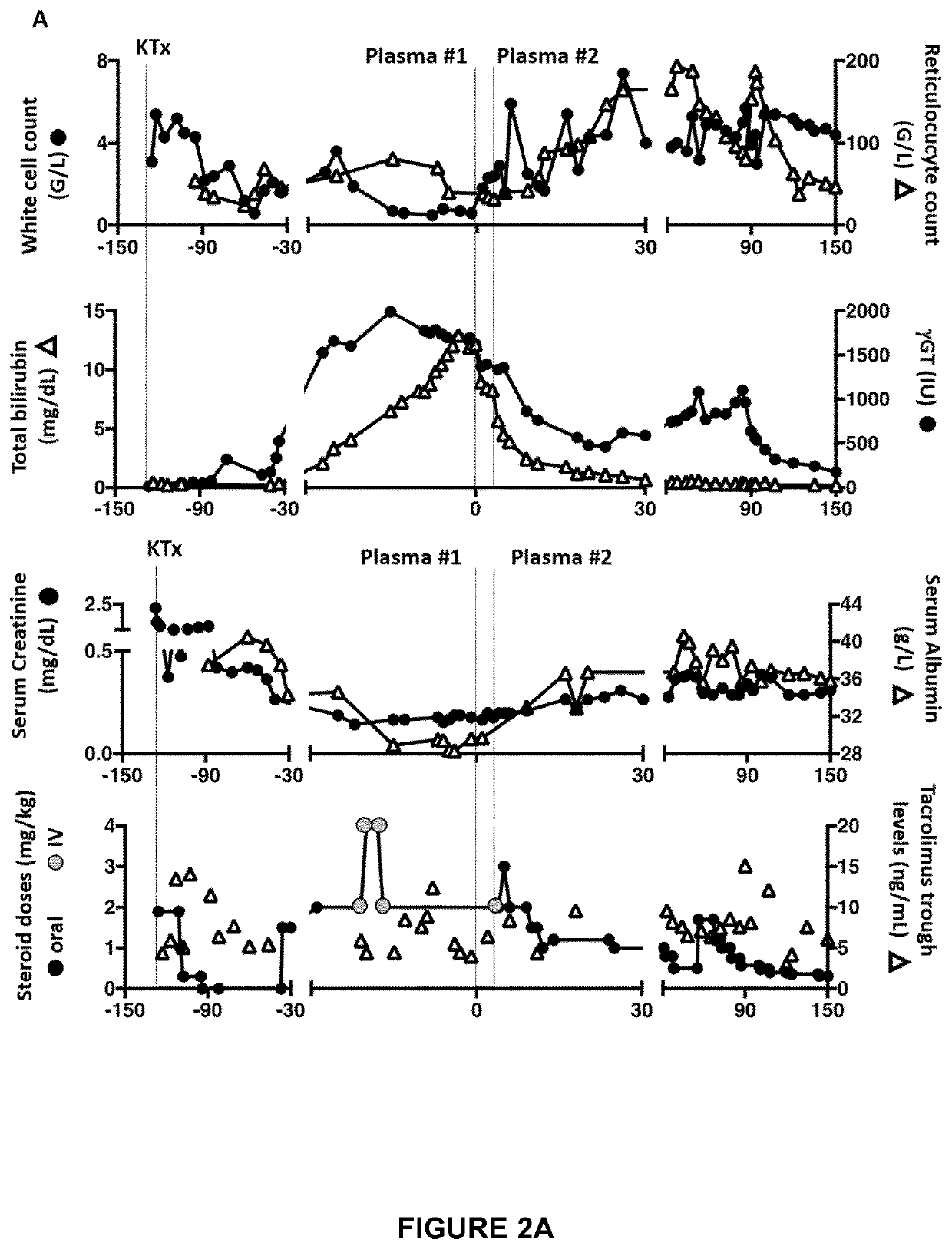Treatment of acute gvhd using donor- specific Anti-hla antibodies
a technology of donor-specific antibodies and acute gvhd, which is applied in the direction of immunological disorders, drug compositions, peptides, etc., can solve the problems of increasing the risk of lethal infections, improving the dismal outcome of patients, and increasing the risk of acute gvhd, so as to efficiently treat transplant recipients and effectively treat overt gvhd
- Summary
- Abstract
- Description
- Claims
- Application Information
AI Technical Summary
Benefits of technology
Problems solved by technology
Method used
Image
Examples
example 1
D after Kidney Transplantation in a 3.5-Year-Old Child
[0175]We were confronted with a very severe corticosteroid-resistant graft-versus-host disease after kidney transplantation in a 3.5-year-old child with severe primary immune deficiency. The progressive nature of hepatic (icteric cholestasis) and hematological (pancytopenia) disorders, under high doses of steroids and tacrolimus, the lack of therapeutic resources (and hematological toxicity of ruxolitinib) and the deterioration of the general and nutritional state have led us to propose an innovative therapy, the only alternative to a palliative approach. This treatment allowed not only a very rapid amendment of life-threatening conditions, but also a decrease in immunosuppressive treatment.
Materials and Methods
Patient
[0176]The patient was a 3.5-year-old boy, diagnosed with Schimke immune-osseous dysplasia, a rare autosomal recessive DNA repair disorder caused by SMARCAL1 gene mutation. Clinical features include short stature, sp...
PUM
| Property | Measurement | Unit |
|---|---|---|
| body weight loss | aaaaa | aaaaa |
| body weight | aaaaa | aaaaa |
| body weight | aaaaa | aaaaa |
Abstract
Description
Claims
Application Information
 Login to View More
Login to View More - R&D
- Intellectual Property
- Life Sciences
- Materials
- Tech Scout
- Unparalleled Data Quality
- Higher Quality Content
- 60% Fewer Hallucinations
Browse by: Latest US Patents, China's latest patents, Technical Efficacy Thesaurus, Application Domain, Technology Topic, Popular Technical Reports.
© 2025 PatSnap. All rights reserved.Legal|Privacy policy|Modern Slavery Act Transparency Statement|Sitemap|About US| Contact US: help@patsnap.com



